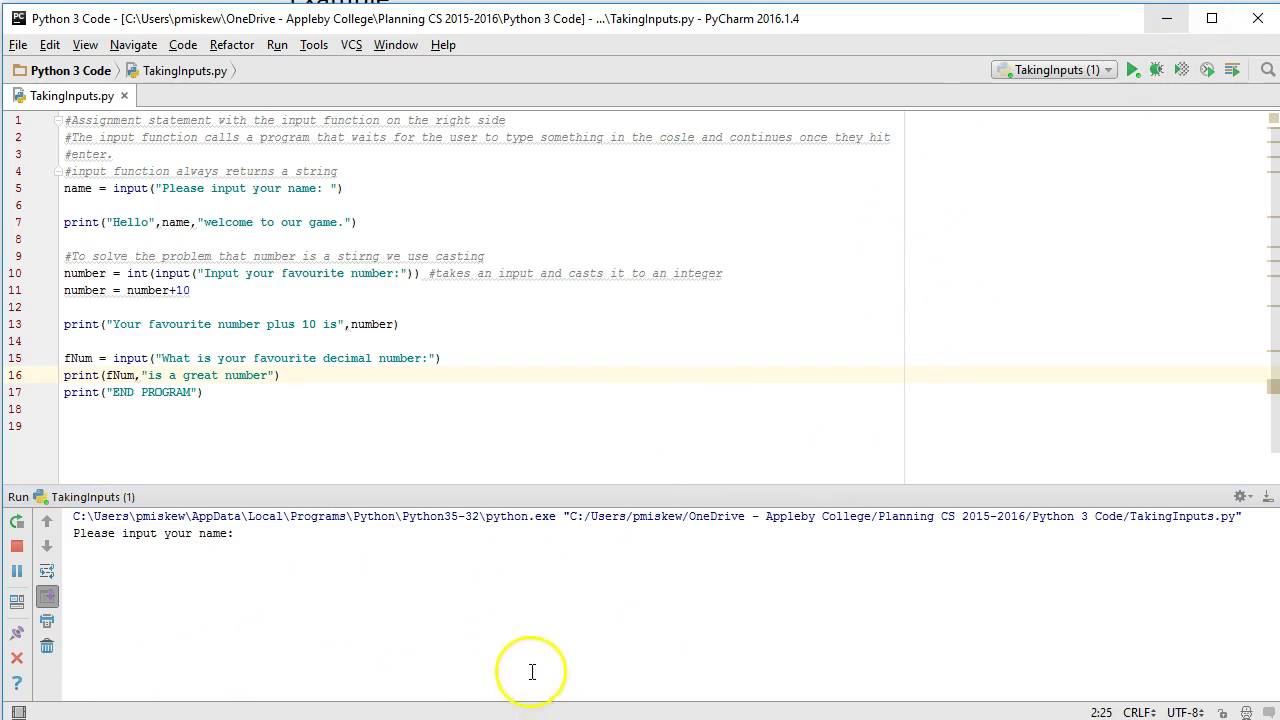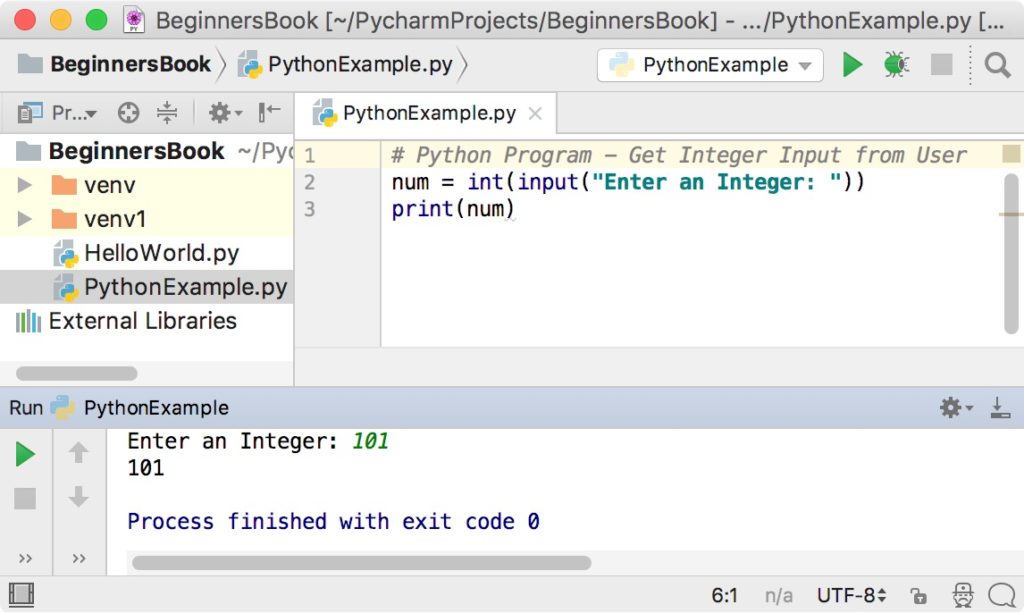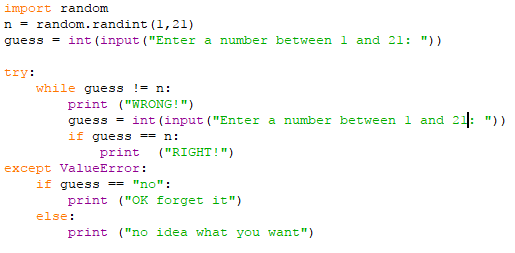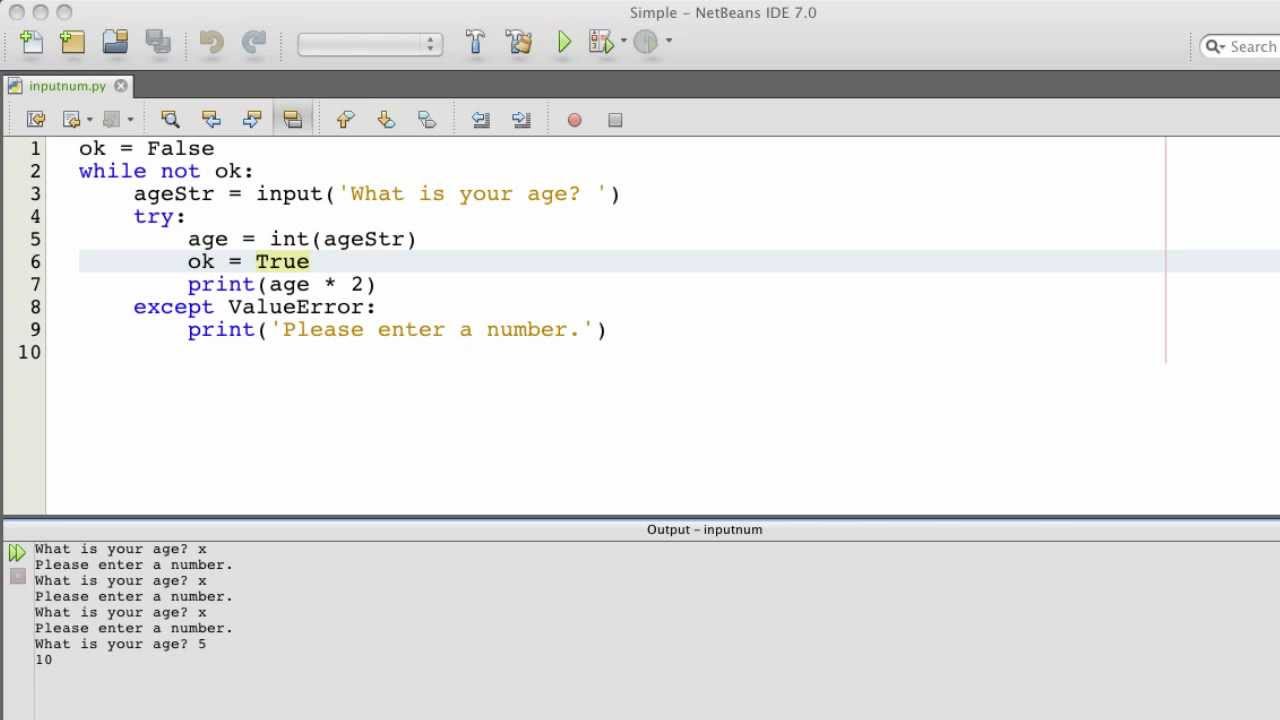How to take input parameters in Python?
How to take input parameters in Python?
In Python, there are several ways to take input parameters depending on the context and requirements of your program. Here are some common methods:
Command-line Arguments: You can pass arguments to a Python script when you run it from the command line. This is useful for scripts that need to be executed with specific inputs. For example, if you have a script calledsum_numbers.py, you can run it like this: python sum_numbers.py 1 2 3. In your script, you can access these arguments using the sys.argv list.
import sys
print("Sum of numbers:", sum(map(int, sys.argv[1:])))
def greet(name):
print(f"Hello, {name}!")
greet("John")
In this case, John is the input parameter to the greet function.
input() function in Python allows you to get user input. For example:
name = input("What's your name? ")
print(f"Nice to meet you, {name}!")
open() and readline() functions. For example:
with open('input.txt', 'r') as f:
lines = [line.strip() for line in f.readlines()]
print(lines)
class Person:
def init(self, name, age):
self.name = name
self.age = age
p1 = Person("John", 30)
print(f"Name: {p1.name}, Age: {p1.age}")
json and xml.etree.ElementTree modules, respectively. Web-Based Inputs: You can get user input through web-based interfaces like Flask or Django by using templates and forms. Command-Line Argument Parser: The argparse module allows you to define command-line arguments and parse them easily. For example:
import argparse
parser = argparse.ArgumentParser(description="Sum of numbers")
parser.add_argument("-n", type=int, nargs="+", help="Numbers to sum")
args = parser.parse_args()
print("Sum of numbers:", sum(args.n))
pickle module. Custom Input Classes: You can define custom classes that handle specific types of input data, such as dates or times.
In summary, there are many ways to take input parameters in Python, depending on your program's requirements and context. By choosing the right method for your use case, you can ensure your program is efficient, flexible, and easy to maintain.
How to input numbers in Python?

I'd be happy to help! Here's a detailed explanation of how to input numbers in Python:
Integer Input

In Python, you can input integers using the int() function or by directly typing an integer value. Let's look at some examples:

# Method 1: Using int() function
num = int(input("Enter an integer: "))
print(num)
Method 2: Directly typing integer values
num = 5
print(num)
In the first example, we use the input() function to ask the user for an input. We then use the int() function to convert this input into an integer value. Finally, we print the inputted value using the print() function.
In the second example, we directly assign an integer value (5) to the variable num without any conversion or prompt. This is a more straightforward way of assigning an integer value in Python.
Float Input
To input floating-point numbers in Python, you can use the float() function or directly type a decimal value:
# Method 1: Using float() functionnum = float(input("Enter a float number: "))
print(num)
Method 2: Directly typing decimal valuesnum = 3.14
print(num)
In the first example, we use the input() function to ask the user for an input, then convert this input into a floating-point number using the float() function.
In the second example, we directly assign a floating-point value (3.14) to the variable num without any conversion or prompt.
Complex Input
For complex numbers, you can use the complex() function or directly type a complex value:
# Method 1: Using complex() functionnum = complex(input("Enter a complex number (in the format 'a+bi'): "))
print(num)
Method 2: Directly typing complex valuesnum = 3 + 4j
print(num)
In the first example, we use the input() function to ask the user for an input in the format "a+bi", where a and bi are real and imaginary parts of the complex number. We then convert this input into a complex value using the complex() function.
In the second example, we directly assign a complex value (3 + 4j) to the variable num without any conversion or prompt.
Conclusion
In summary, you can input numbers in Python using various methods:
Integer: Directly type an integer value or use theint() function with the input() function. Float: Directly type a decimal value or use the float() function with the input() function. Complex: Use the complex() function with the input() function to input complex numbers, or directly type a complex value.
Remember, Python is a versatile programming language that allows you to work with various data types and perform tasks efficiently!































